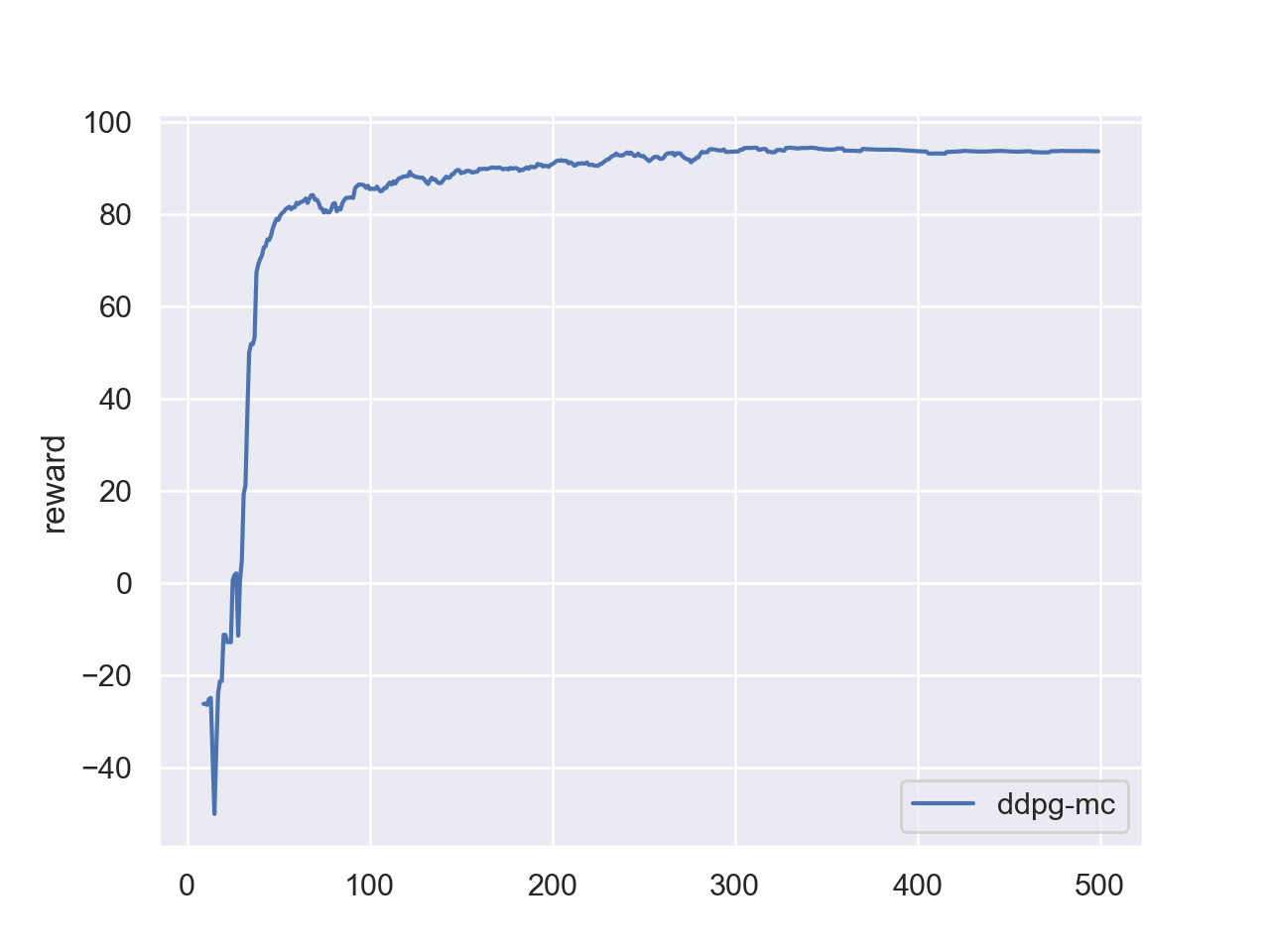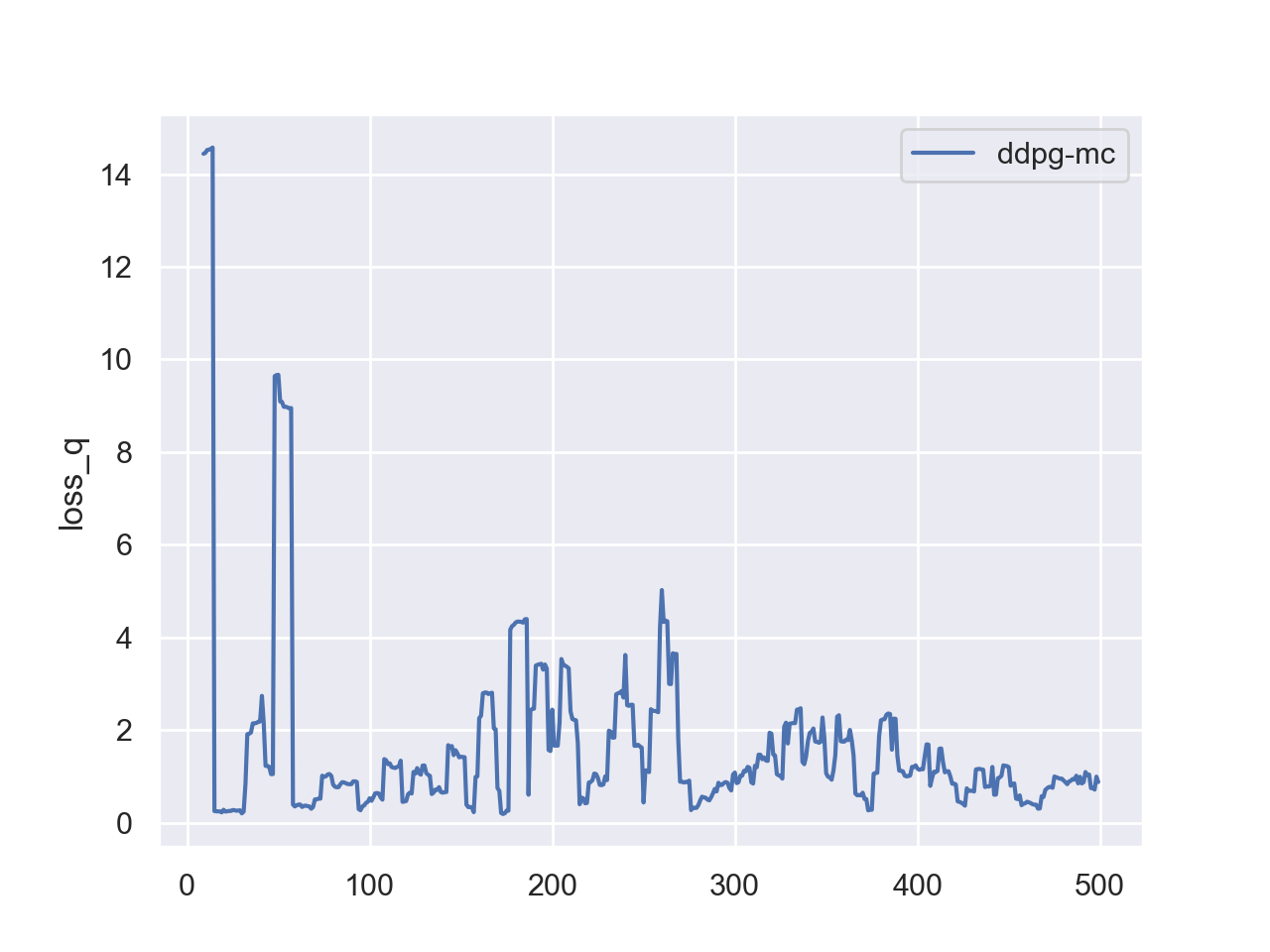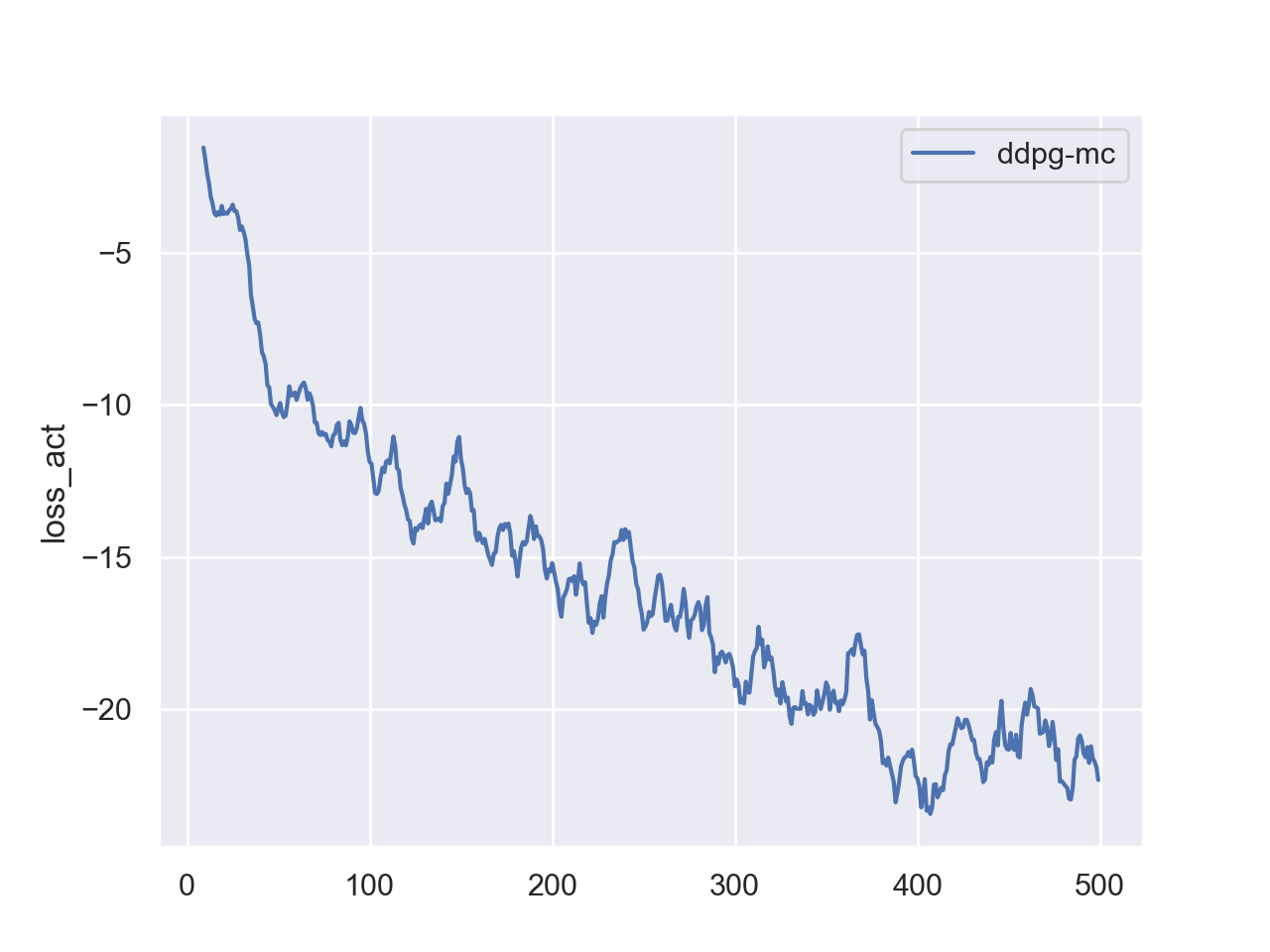Lab 04: DDPG
Understand DDPG
Read the document from OpenAI spinning up HERE
Write Code
- Adapt the DQN code from previous demo
- Solve the
MountainCarContinuous-v0
What you need to change:
Add another neural nets (and its target) as the policy making function, a.k.a., actor. It takes obs as input and outputs an action, which in this case should be an np.array.
- Incorporate the range of action
self.act_limintoact_net
Change the q_net to take [state, act] as input and outputs a single value as the Q value.
- This include changing all the places you called
self.q_net. - The way to combine
stateandactis like thisq_input = torch.cat( [next_obs, self.act_lim*self.target_act_net(next_obs)], axis=1) y = reward + self.gamma * (1 - done) * \ self.target_q_net(q_input).squeeze()
Change the random policy behavior
- Instead of doing the greedy epsilon, just simply add a random noise signal like:
act += self.noise*np.random.randn(n_action)where
self.noiseis a hyperparameter you can tweak.
Over the course of training, feel free to decay this noise to yield less random “policy”:
if agent.noise > 0.005:
agent.noise -= (1/200)
Note: Decay this noise after every trial/episode, not every step.
Change act to FloatTensor in the ReplayBuffer.
Return two kinds of loss for inspection, loss_q and loss_act
Writing Report
Questions to answer:
- How does the setting of noise scale
self.noiseimpact the training and performance?- Preferably, try to run multiple experiments with different
self.noisesettings and plot the results.
- Preferably, try to run multiple experiments with different
- (Open-Ended question) What is the major downside of DDPG according to your understanding/observation?
Deliverables and Rubrics
- (75 pts) PDF (exported from jupyter notebook) and python code.
- The report should include at least reward curve over each training iteration (i.e., episode).
- (15 pts) The result shows your implementation achieved desirable result.
- If your code is correct, the mean reward should be above 80 after 300 episodes. (Check my plots below)
- (10 pts) Reasonable answers to the questions.
Debugging Tips
- Check the loss:
loss_qshould be positive,loss_actshould be negative . Positiveloss_actusually indicates sparse or non successful trials had been heavily used for training.
Here are my neural nets:
self.q_net = nn.Sequential(
nn.Linear(n_state + n_action, 400),
nn.ReLU(),
nn.Linear(400, 300),
nn.ReLU(),
nn.Linear(300, 1)
)
self.act_net = nn.Sequential(
nn.Linear(n_state, 400),
nn.ReLU(),
nn.Linear(400, 300),
nn.ReLU(),
nn.Linear(300, n_action),
nn.Tanh()
)
I initialize the exploration noise to 2.
Here is my main train loop. Feel free to copy it: (Change the agent to your own policy)
loss_q_list, loss_act_list, reward_list = [], [], []
update_freq = 10
n_step = 0
loss_q, loss_act = 0, 0
for i in tqdm(range(500)):
obs, rew = env.reset(), 0
while True:
act = agent(obs)
next_obs, reward, done, _ = env.step(act)
rew += reward
n_step += 1
agent.replaybuff.add(obs, act, reward, next_obs, done)
obs = next_obs
if len(agent.replaybuff) > 1e3 and n_step % update_freq == 0:
loss_q, loss_act = agent.update()
if done:
# if reward > 90:
# print("wow")
break
if i > 0 and i % 50 == 0:
run_episode(env, agent, True)[2]
print("itr:({:>5d}) loss_q:{:>3.4f} loss_act:{:>3.4f} reward:{:>3.1f}".format(
i, np.mean(loss_q_list[-50:]),
np.mean(loss_act_list[-50:]),
np.mean(reward_list[-50:])))
if agent.noise > 0.005:
agent.noise -= (1/200)
loss_q_list.append(loss_q), loss_act_list.append(
loss_act), reward_list.append(rew)
My training curves are like:


